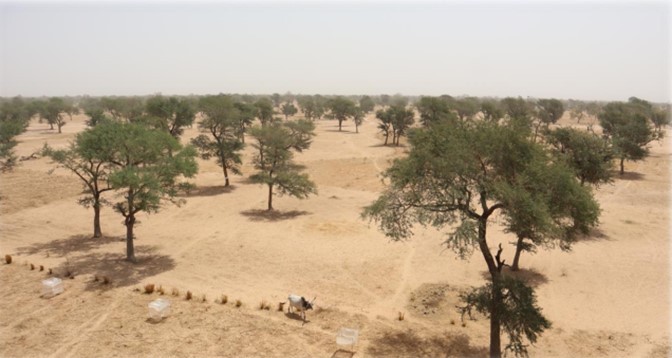Universitetsavisen
Nørregade 10
1165 København K
Tlf: 21 17 95 65 (man-fre kl. 9-15)
E-mail: uni-avis@adm.ku.dk
PhD thesis defense
PhD thesis defense — Tingting Lu 22 August
Date & Time:
Place:
Zoom: https://ucph-ku.zoom.us/j/62960684701
Hosted by:
Geography Section 2, Department of Geosciences and Natural Resource Management, Øster Voldgade 10, 1350 København K
Cost:
Free
Tingting Lu defends her thesis,
Earth observation of the Sahel-Sudan region and its parkland system
Supervisors:
Professor Rasmus Fensholt, IGN
Associate Professor Martin Brandt, IGN
Assessment committee:
Associate Professor Jie Zhou, Central China Normal University – China
Research Scientist Stefanie Herrmann, University of Arizona – USA
Professor Ole Mertz (chair), IGN
Summary (shortened):
The Sahel-Sudan region spans the northern part of sub-Saharan Africa, experiencing an arid to sub-humid climate with a pronounced dry season and a brief rainy season. With generally low and unpredictable rainfall, the region’s vegetation is highly vulnerable to droughts, impacting local agricultural production and food security. The parkland systems in this area reflect the adaptive ecological knowledge of farmers to cope with environmental risks, which crops grown under a discontinuous cover of scattered trees. In parklands, of particularly featuring trees like Faidherbia albida (hereafter referred to as Faidherbia), play a crucial role in several ecosystem services by providing soil cover to reduce erosion, mitigating climate change impacts, and offering resources such as fodder, fruits, and firewood for both livestock and human consumption, thus serving as a focus of local ecological knowledge and scientific interest.
In summary, the Sahel-Sudan region is a transitional zone between the Sahara Desert and the savannahs with a challenging environment marked by water deficit and food insecurity conditions. Efforts to address the region’s challenges often require a comprehensive understanding of the mechanism of both ecohydrological and ecological processes. This thesis aims to use Earth observation (EO), machine learning techniques, and advanced analytical methods to monitor, study, and analyze the landscapes, ecosystems, and environmental dynamics of the Sahel-Sudan region, specifically focusing on its parkland systems. This thesis focuses on three interconnected research studies that shed light on the relationship between the interaction between vegetation and water, climate dynamics on vegetation, and interaction among vegetation, and fills research gaps by addressing three main questions: 1) What is the role of climate change in vegetation-water response? 2) what is the spatial distribution of the Faidherbia? 3) what is the contribution of this species to the agroforestry ecosystem and if this effect could be observed on a large scale?
The first study investigated the spatial-temporal dynamic of vegetation-water response. To achieve this, this study utilized the Normalized Difference Vegetation Index (NDVI) and Standardized Precipitation Evapotranspiration Index (SPEI) as proxies for vegetation growth and water availability. Interestingly, the study found that CO2 and temperature primarily influence changes in the vegetation-water response.
Multi-purpose Faidherbia trees are widely found in the parkland systems in the Sahel-Sudan region. Accurate mapping of Faidherbia is important for a better understanding of the interaction with crops within agricultural systems in the Global South. The resulting map found ⁓6.5 million individuals of Faidherbia trees over 0.8 million km2. Although the benefits of Faidherbia to crop yield by improving soil properties, available water capacity, and microclimate have been documented and proven on a local scale, it is still uncertain if this effect exists on a large scale.
The third study mapped and utilised Faidherbia density and other environmental variables as independent variables to explain the spatial variability in vegetation greenness (NDVI used as a proxy for vegetation production) in farmland over grids of varying scales with spatial regression models. The best model in various spatial scales could explain around 70% of the spatial variability in vegetation greenness. The estimation results indicate a statistically significant positive effect of Faidherbia on adjacent vegetation, including the crops, shrubs, and trees in farmland, thereby confirming the presence of a positive Faidherbia effect on farmland across the Sahel-Sudan region of West Africa.
A digital version of the PhD thesis can be obtained from the PhD secretary at phd@ign.ku.dk before the defence. After the defence the thesis will become available from the Royal Danish Library
